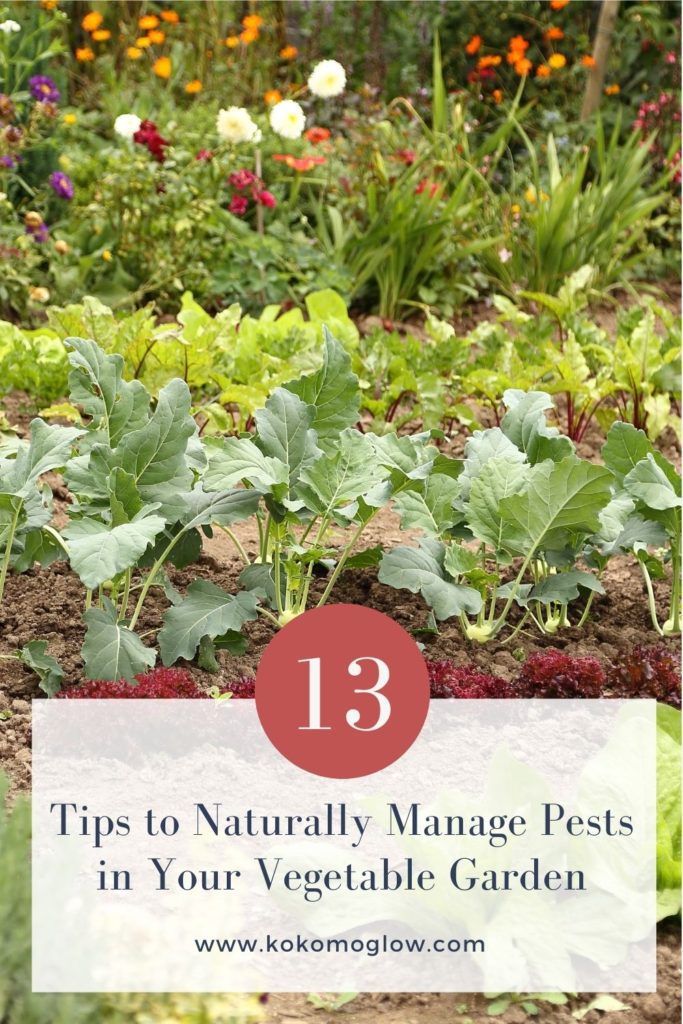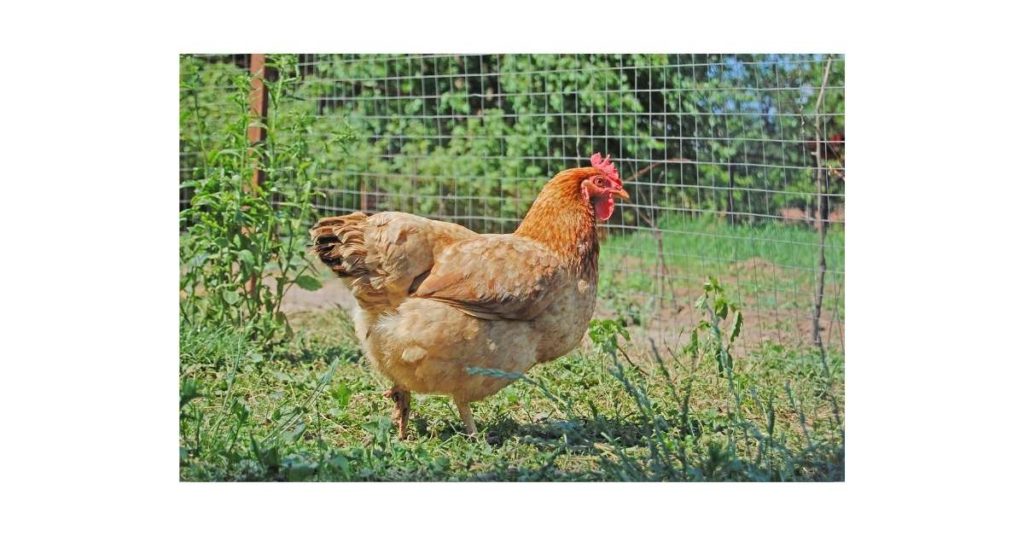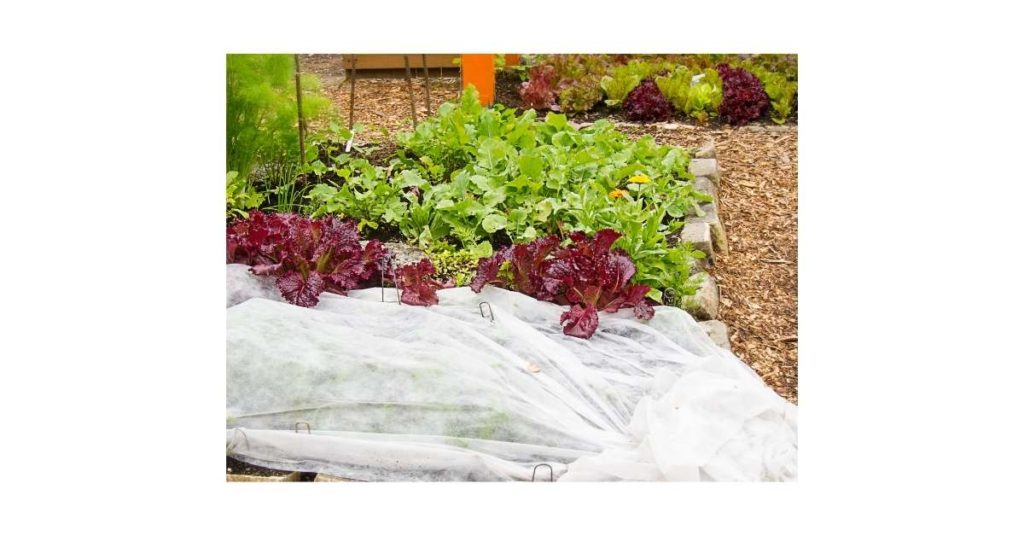13 Tips to Naturally Manage Pests in Your Vegetable Garden
You start planning your garden in the spring. You patiently wait until the last frost before you start planting. You spend hours weeding, getting the soil right, planting your seeds, and lovingly watering your garden. You get so excited when you see little green sprouts coming out of the soil. You can’t wait to harvest some home grown food. Then one day you go out and see pests are taking over your veggies. Nooooooo!
Thankfully great minds have figured out ways to naturally manage pests in your vegertable garden without the use of synthetic pesticide which have the following downsides:
- Toxicity to humans
- Toxicity to other species that are beneficial like bees
- Band-aid solution, it does not get to the root of the problem and won’t make your plants healthy
- It can be expensive
Instead focus on preventing pests from taking over in the first place, and use a natural pesticide as a last resort. Let’s review some ways to keep your veggies in tip top shape!
13 Tips to Naturally Manage Pests in Your Vegetable Garden

A majority of these tips are ways to prevent your garden from becoming a feast for bugs. Prevention is key, it’s hard to stop pests once they get started. Read on to know how to protect your vegetable garden from unwanted bugs, these are natural alternatives to pesticides in the garden.
Tip 1: Pick a Good Spot for Your Garden

You want to ensure your veggies are in the spot where they will thrive and be happy and healthy. They will grow best in well-drained soil and full sun (6 – 10 hours per day). When scouting for a garden spot, look at the area at different times during the day and when there’s different weather patterns (sunny, rainy, windy, overcast). Ask yourself:
- Is there full sun in this spot? Is there too much shade?
- Is it protected from the wind?
- When it rains does the water flood the area? Does it soak in to the soil? Does it move down the hill?
- Is the garden in a convenient location so you can tend to it on a regular basis? Is it convenient when you want to go grab some tomatoes and peppers for your dinner in the evening?
It would be pretty disappointing to go through all the work of creating your garden and then realizing it doesn’t get enough sun, or water puddles up in the area when it rains. Set yourself up for success!
Tip 2: Start with Healthy Soil

Soil is a living ecosystem, every teaspoon of soil is home to billions of microorganisms. This includes bacteria, fungi, nematodes, insects, and earthworms which all play important functions for your garden. Focusing on the health of your soil is important because it provides your vegetables with access to air, water, and nutrients.
You can start with testing your soil to know the pH and nutrient levels. Google your state and soil test to see how and where you can send the sample. The analysis they provide should include ways you can improve your soil too.
The soil should have organic matter, it’s a small percent of what makes up the soil but it’s very important for keeping your soil and veggies thriving. Organic matter is plant and animal material that is in the process of decomposing. Examples of organic matter would be:
- Compost
- Plants and weeds
- Mulch
- Straw
- Manure
Here’s a great resource on how to build healthy soil.
Tip 3: Plant a Variety

If you are growing multiples of the same plant then pests can get out of control fast because they have a “never ending” supply of food. Instead use a diverse range of plants and mix them up. The thought is that this confuses the pests since they may land on a different plant every time. Here are some plants to intermix with your veggies which can encourage pest predators or repel pests:
- Garlic
- Dill
- Ginger
- Family Asteraceae: cosmos, chrysanthemum, aster, chamomile, artemisia, marigold
- Family Umbelliferae: yarrow, anise, dill, angelica, fennel, parsley queen anne’s lace
Tip 4: Companion Plant

Set your plants up with partners that will enrich their lives by planting them next to each other. For pest prevention, certain plants can protect the other plant from pests that are usually attracted to it. An example of this is lettuce and chives since the chive smell would mask the lettuce smell. Farmer’s Almanac has an excellent guide on companion planting.
Tip 5: Space Out Your Plants
Seed packets contain information on seed spacing. I would always glaze over this part, and later found out this was important for healthy plants! It can prevent pests from easily spreading from plant to plant. When plants are too close it also provides the pests with shelter from the weather and predators. Spacing out plants also gives the plants good air circulation.
Tip 6: Rotate Veggies in Your Garden
Certain veggies could benefit from crop rotation. Keep track of where you plants things and after a few years plant them in a different spot. This even includes members of the same family, example tomatoes and potatoes are both members of the Solanaceae family. If you noticed pests on plants one year, they may be less likely to have the same pests after a rotation. If you have a raised garden or small garden you could also look at replacing the soil every few years if you continue to have a pest problem. Farmers Almanac has great tips on crop rotation.
Tip 7: Water Your Garden Correctly

I used to just take a hose whenever I had free time to water my plants, and I didn’t have much of a thriving garden. There’s a smart and efficient way to water your garden and getting things just right can ensure your plant ecosystem isn’t susceptible to pests. Here are some basics:
- Check what’s required of your veggies before you plant them, avoid too much or too little water.
- Deep watering will give you healthy root growth, it makes roots deeper and stronger. Experts say you want about 1-2 inches per week (you may be able to hold off on watering if you have a rainy week, put out a rain gauge to know how much you get).
- Mulch will reduce watering needs since water doesn’t evaporate as quickly.
- The best time to water is in the morning while it’s still cool so you don’t lose too much water to evaporation as it’s soaking into the soil. The second best option is the evening but you want to avoid getting the leaves wet since it makes them vulnerable to fungal problems.
- Check out this garden watering guide for more great tips and tricks.
Tip 8: Understand Your Garden’s Ecosystem
Your garden is its own ecosystem. There will be bugs in your garden and most are not harmful and they are busy at work keeping your garden running smoothly. Pests are usually taken care of without your involvement if there is balance with the soil, water and plants. Grab yourself a happy hour refreshment and chill by your garden and check out the different critters all around.
Tip 9: Remove Unhealthy Plants
Weed out any plants that look unhealthy since it may encourage pests to your garden and then start spreading to the healthier plants.
Tip 10: Attract Beneficial Critters

There will be many bugs in your garden and most of them will be beneficial! Here are some common ones to look out for:
- Lacewings
- Spiders
- Ladybugs
- Wasps
- Robberflies and hoverflies
- Dragonfly larvae and damselfly
- Praying Mantis
- Ground beetles
- Check out the Famer’s Almanac for visuals, benefits, and how to attract these bugs
There are also animals that will benefit your garden. These include:
- Toads and Frogs
- Bats
- Birds
- Garter Snakes
- Check out this post for more information on the benefits of these critters
Tip 11: Chicken Run

Chicken love insects and if you have them you could build a run around your garden. Here are some of their favorite bugs:
- Grasshoppers
- Crickets
- Flies
- Fleas
- Grubs
- Spiders
- Ticks
- Termites
Bonus this will ensure your chickens have a well balanced diet 🙂 Read more about this idea here.
Tip 12: Use Barriers to Protect Plants From Pests

There are ways to create barriers so pests can get to your plants, some of these include things you may already have in your house. Here are some examples:
- Row covers are garden fabric that allow light, air, and water to get to the plant. You could use a structure to lay the cover on or directly on the plants.
- For snails and slugs, you can try putting eggshells, copper rings or tape, sharp sand, or sawdust around your plants. Another method is putting upturned citrus shells, and checking the shells the next day to see if you trapped some pests.
- For cutworm, use cardboard or cans to put over seedlings and push in to ground about ½ inch.
- For rascally rabbits, use garden fences
Tip 13: Identify the Pests in Your Garden and Use Natural Methods to Get Rid of Them
Hopefully with the above preventive measures you find yourself not dealing with too many pests in your veggie garden. Here are signs that you many have pests snacking in your garden:
- Large holes in leaves
- Leaves curling up
- Leaves fallin off
- Drooping leaves
- Leaves with small yellow spots
Trusty old Farmers Almanc has a great visual on garden pests and natural ways to get rid of the following bugs:
- Aphids
- Cabbage Root Maggots
- Cabbage Worms
- Cucumber Beetles
- Cutworms
- Earwigs
- Flea Beetles
- Japanese Beetles
- Mexican Bean Beetles
- Slugs and Snails
- Squash Bugs
- Squash Vine Borer
- Thrips
- Tomato Hornworms
- Whiteflies
Final Thoughts
There is great satisfaction with growing and harvesting your own food. Not having to use synthetic pesticides on your vegetables makes things even better. You will avoid exposing yourself, your family, and the environment to toxic ingredients. I hope these tips help keep your garden thriving and gives you a way to naturally manage pests in your vegetable garden. Remember the best thing you can do is set your garden up to prevent pests from even taking over and that starts with a good location with full sun, healthy soil, proper watering, and having a diverse range of plants.
Cheers to veggies!
-Brekke

